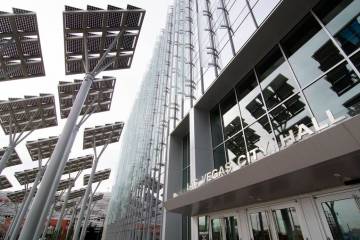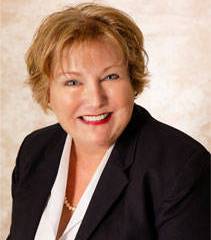The Las Vegas metro area had reason to celebrate the recent news that Scientific Games Corp. is moving its headquarters here.
We should be the home of the gaming equipment industry and the company that has swallowed both Bally Technologies and WMS Industries is a trendsetter in that sector. Unlike other relocations, the presence of skilled talent was never an issue. The smart people in that industry are already here.
But there are some numbers here that just don’t add up.
The company says it is bringing 200 new jobs. Great. Some of them will likely be a cadre of executives and support staff making the move from New York. Given the weather in Gotham, they probably think they’ve already won the jackpot. Others in that 200 number will be tied to a new television venture.
There’s every reason to celebrate the plan by Scientific Games Productions to build a 40,000-square-foot soundstage for its new ‘Monopoly Millionaire’s Club’ TV game show. Las Vegas wants to grow its film and video production capacity and this is a $4.8 million step in the right direction. The show’s theme also dovetails nicely with Las Vegas’ image as a place where fortunes are made. It’s the kind of branding the Visitors and Convention folks would usually spends millions to achieve.
Still, did a company that just spent $5.1 billion to buy Bally Technologies really need to beat the State of Nevada out of $2.5 million in economic development funding to help pay for this game-show dalliance?
Now, as we all learned from the Tesla deal, Governor Brian Sandoval and his team are focused on jobs now with little regard for the longer term tax implications. But are they also in the business of paying public companies to do what they were going to do anyway?
Gavin Isaacs, CEO of Scientific Games, summed it up well: “Las Vegas is a diverse, cosmopolitan city in business-friendly Nevada where we have strong roots and an extensive and growing employee base… This move will allow us to stay closely connected to our worldwide base of gaming, lottery and interactive customers.”
Both the move and the ‘Monopoly Millionaires’ Club’ venture were already well down the tracks.
Looking strictly at the economic development agency’s rules of engagement, the studio investment and employment promise suggest Scientific Games is entitled to an assist from the state. Good for them. They saw low-hanging fruit and grabbed it. That’s good business.
The larger question is whether Nevada taxpayers just subsidized a situation in which Scientific Games adds 200 ‘new’ jobs while eliminating hundreds of ‘old’ jobs, perhaps enough to result in a net loss to the local economy.
Merging giant operations like Scientific Games, WMS and Bally Technologies is a herculean task and it seldom goes smoothly. Remember Compaq and HP? How about the recent rash of airline mergers?
The simple truth is the economic benefit of merging comes in shaking out some of the duplication of effort. That means some jobs somewhere will go away. One estimate floated last fall set the bar at 21 percent of “back office” positions, an unspecified subset of Bally Technologies’ nearly 4,000 employees.
In this case, Scientific Games is projecting a saving of $235 million from the Bally Technologies acquisition through 2016. How much of that is coming from terminating Bally employees? We don’t know today and our bet is the state economic development folks don’t know either. Even Scientific Games doesn’t know for certain, although they obviously have an idea.
There’s every reason to believe that Scientific Games will be a valuable member of the Las Vegas business community in the long run. For a prime example, meet the company’s general counsel on Page 22 of this issue. Katie Lever is the subject of our Snapshot feature primarily because she is chairing the annual Go Red for Women luncheon for the American Heart Association.
We should welcome another power player with open arms. And in the big picture that $2.5 million subsidy is peanuts, even if it comes on the heels of Sandoval’s proposal to stage the largest tax hike in Silver State history.
Still, it might be a good idea to hold our applause until we can determine whether the city slickers got the best of the locals on this first hand in what we hope will be a long game. That $2.5 million may look a lot larger come the final day of the legislative session.







